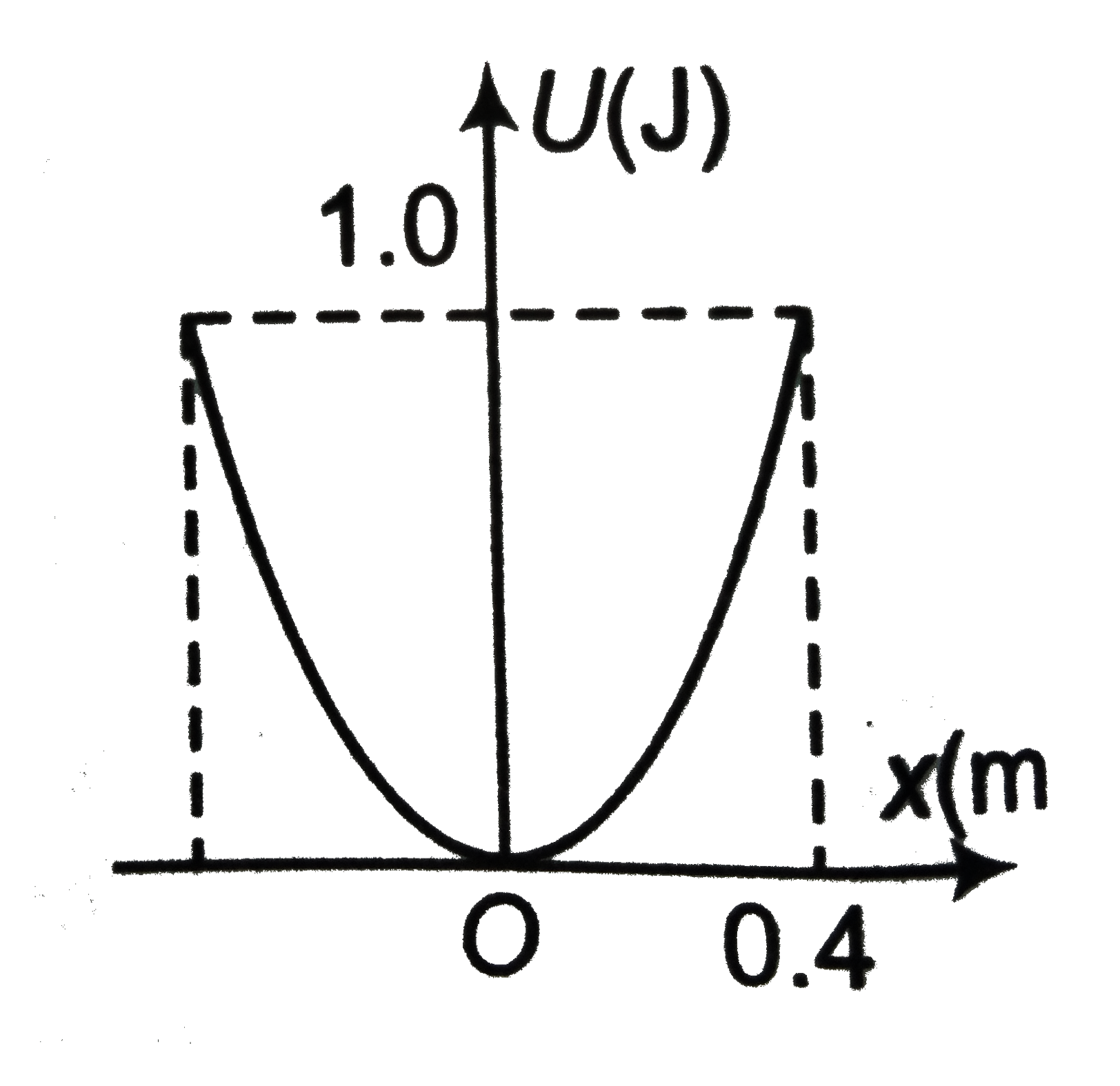The time period of a particle in simple harmonic motion is T. Assume potential energy at mean position to be zero. After a time of T6 it passes its mean position ,then at t=0 its,
velocity will be one half its mean position, its
displacement will be one half its amplitude
acceleration will be nearly 85% of its maximum acceleration
KE=PE
The correct Answer is:A, C
V=V0cosωt=V0cos(2πtT)
V=V0cos(2πT)T6=V02 (A)
a=a0sinωt=a0sin(2πtT)
=a0sin(2πTT6)=√3a02=86a0. (C )
Topper's Solved these Questions
- LINEAR AND ANGULAR SIMPLE HARMONIC MOTIONBOOK - CENGAGE PHYSICS ENGLISHCHAPTER - LINEAR AND ANGULAR SIMPLE HARMONIC MOTIONEXERCISE - Assertion Reasoning
6 Videos
- LINEAR AND ANGULAR SIMPLE HARMONIC MOTIONBOOK - CENGAGE PHYSICS ENGLISHCHAPTER - LINEAR AND ANGULAR SIMPLE HARMONIC MOTIONEXERCISE - Comprehension
33 Videos
- LINEAR AND ANGULAR SIMPLE HARMONIC MOTIONBOOK - CENGAGE PHYSICS ENGLISHCHAPTER - LINEAR AND ANGULAR SIMPLE HARMONIC MOTIONEXERCISE - Single Correct
107 Videos
- KINETIC THEORY OF GASES AND FIRST LAW OF THERMODYNAMICSBOOK - CENGAGE PHYSICS ENGLISHCHAPTER - KINETIC THEORY OF GASES AND FIRST LAW OF THERMODYNAMICSEXERCISE - Interger
11 Videos
- MISCELLANEOUS KINEMATICSBOOK - CENGAGE PHYSICS ENGLISHCHAPTER - MISCELLANEOUS KINEMATICSEXERCISE - Interger type
3 Videos
Similar Questions
The phase (at a time t) of a particle in simple harmonic motion tells
View SolutionThe time period of a particle executing SHM is T. After a time T/6 after it passes its mean position, then att=0 its :
View SolutionA particle of mass 2kg moves in simple harmonic motion and its potential energy U varies with position x as shown. The period of oscillation of the particle is

View SolutionA particle of mass 2kg moves in simple harmonic motion and its potential energy U varies with position x as shown. The period of oscillation of the particle is

View SolutionA particle executes a simple harmonic motion of time period T. Find the time taken by the particle to go directly from its mean position to half the amplitude.
View SolutionCan the potential energy in a Simple harmonic motion be negative ? will it be so if we choose zero potential energy at some point other than the mean position?
View SolutionA particle executes simple harmonic motion with an amplitude of 4cm At the mean position the velocity of the particle is 10cm/s. distance of the particle from the mean position when its speed 5 cm/s is
View SolutionPosition-time relationship of a particle executing simple harmonic motion is given by equation
x=2sin(50πt+2π3) where x is in meters and time t is in seconds.
What is the position of particle at t=0 ?
View SolutionPosition-time relationship of a particle executing simple harmonic motion is given by equation
x=2sin(50πt+2π3) where x is in meters and time t is in seconds.
What is the position of particle at t=0.5s ?
View SolutionThe simple harmonic motion of a particle is given by x = a sin 2πt . Then, the location of the particle from its mean position at a time 1/8th of second is
View Solution
